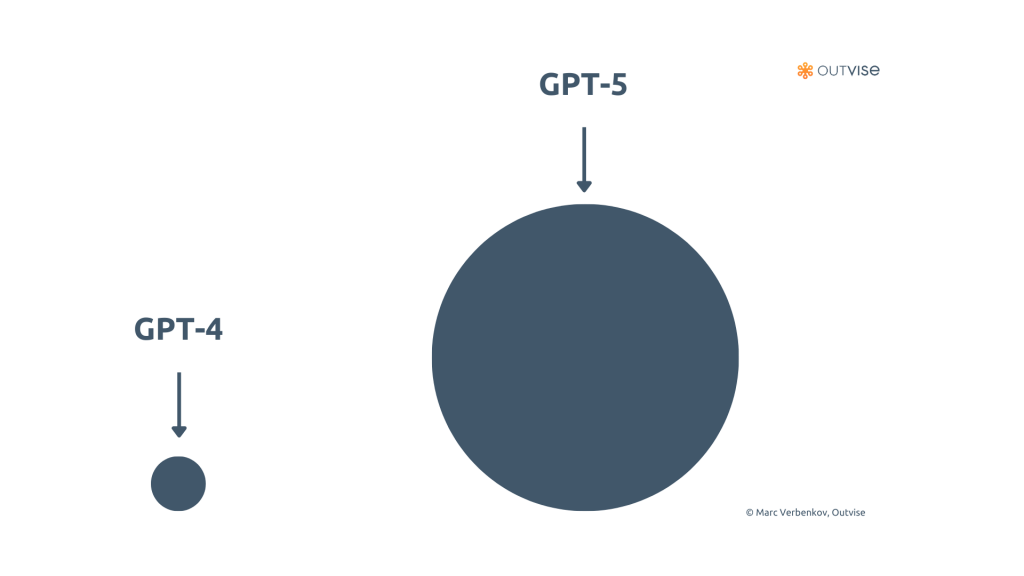In our rapidly changing world, there are boundless possibilities for expansion and innovation, yet it simultaneously presents innumerable obstacles and uncertainties. To ensure long-term success, businesses must understand these challenges and proactively adapt to change. A key factor in staying ahead of the competition is strategic foresight – the capacity to foresee and adjust to emerging trends, technologies, difficulties and prospects.
In our age of accelerating technological growth, strategic foresight has become more critical than ever before. It equips organisations with the ability to pinpoint potential risks and opportunities before they arise, allowing them to make well-informed decisions and implement suitable measures. Not doing so can lead to complications and even disaster.
Kodak and Blockbuster are two prime examples of companies that were unable to foresee impending technological shifts, adapt accordingly and consequently collapsed. Their stories serve as cautionary tales for networking organisations and their members, illustrating the importance of strategic foresight and the consequences of failing to plan for the future.
Table of Contents
Blockbuster: From market leader to obsolete
Blockbuster was once the largest video rental chain in the world, boasting thousands of stores and millions of customers. However, the company’s downfall came as a result of its inability to foresee the impact of digital streaming services on the video rental industry.
As companies like Netflix began to gain traction, Blockbuster continued to focus on its brick-and-mortar stores, neglecting the potential of online streaming. Despite several attempts to enter the digital market, Blockbuster was unable to compete with more agile and innovative competitors. The company filed for bankruptcy in 2010 and closed its last remaining stores in 2013.
Kodak: The downfall of an industry giant
For decades, Kodak was a dominant player in the photography industry, known for its high-quality cameras and film products. However, the advent of digital photography posed a significant threat to Kodak’s core business. Rather than embracing the new technology and investing in digital cameras, Kodak chose to focus on its traditional film products, mistakenly believing that digital photography would not surpass film in terms of quality and affordability.
By the time Kodak realised the potential of digital photography, it was too late. The company struggled to keep up with its competitors, which had already established themselves as leaders in the digital photography market. Kodak’s failure to adapt to the changing landscape and anticipate the widespread adoption of digital technology ultimately led to its bankruptcy in 2012.
Kodak’s collapse becomes all the more staggering when you consider that one of their own employees was the pioneer behind the first digital camera. Upon presenting this groundbreaking invention and its numerous advantages to the company’s executive team, the innovator was met with skepticism. The executives argued that digital technology contradicted Kodak’s core brand and that film photography would continue to dominate the market.
The importance of strategic foresight for modern organisations
The examples of Kodak and Blockbuster demonstrate the importance of strategic foresight for businesses across all industries. For today’s organisations especially, this means being proactive in identifying emerging trends, adapting to the changing business landscape, and being aware of the possibilities that emerging and future technologies offer to remain competitive. If your organisation isn’t aware of what’s around the corner, it has a much higher likelihood of being negatively impacted in the years to come, and even disappearing entirely.
But strategic foresight isn’t just about risks and how to mitigate them, it’s about finding or even creating new opportunities. New markets, business efficiencies, and products & services are being identified and leveraged for those organisations that manage to ‘stay ahead of the curve.’ And this has never been more true as it is today, especially with the recent and ongoing AI arms race that has been unfolding these last several months.
How emerging technologies and newfound opportunities
With over a million users signing up in five days after its public release and breaking 100 million users after two months, ChatGPT became the fastest-growing platform of all time. Most people use ChatGPT mainly for a set of standard tasks:
- Brainstorming ideas: Users turn to ChatGPT to help them brainstorm ideas for creative projects, business strategies, or problem-solving by generating suggestions and potential solutions.
- Content creation: Users employ ChatGPT to generate written content, such as blog posts, articles, social media updates and marketing materials, in a faster and more efficient manner.
- Writing assistance: ChatGPT acts as a writing assistant, helping users draft emails, reports, or other documents by providing suggestions, improving grammar, or rephrasing sentences for clarity.
- Learning and research: Users ask ChatGPT questions to obtain information, explanations, or summaries on various topics, assisting with learning and research tasks.
- Code generation and assistance: Some users ask ChatGPT to generate code snippets, provide programming tips, or assist with debugging code-related issues.
Compared to just last year, these are powerful examples and the benefits experienced in organisations and the people in them are immediate. However, for those that incorporate strategic foresight into their organisations, scanning ahead becomes an essential action. Sticking with AI examples and looking at recent advances in the AI industry, it is becoming clear that more opportunities can be seen on the horizon and should be adopted in how a company functions over the next several years.
With the release of GPT-4, on March 14, a wave of tools and new capabilities are on the horizon:
- With the new OpenAI ‘App Store’, plugins can access specific databases and translate them into natural language. Most notably it has connected to Zapier’s automation software suite, essentially enabling a phrase of text to turn into a set of actions that the AI will carry out. (e.g. “It can write an email, then send it for you. Or find contacts in a CRM, then update them directly. Or add rows to a spreadsheet, then send them as a Slack message. The possibilities are endless.”)
- Real-time insights into financial data. As GPT-4 can take substantially more text as input, businesses can ask it to analyse internal financial information and assess actions, give recommendations, and shift performance or actions so that an organisation is more competitive.
- You can now link GPT-4 to the Internet, allow it to search and scrape up-to-date information, analyse and summarise what you want to search for. This can essentially replace most desk research and even Google’s main search function.
Though GPT-4 and future AI models will be a threat to Google, as a massive company they have previously employed foresight into their activities. They are in the process of releasing their own ChatGPT rival, Bard. Your organisation may not be as large nor as dominant as Google, but if even the Internet giant can be severely disrupted by a relatively small and new company, your organisation can certainly face similar issues. As with Blockbuster and Kodak, Google could have ignored the trends and new technologies, and joined the long list of giants who failed to see what was coming in the future.
To finalise this thought, GPT-4 was released less than a month ago and in its first two weeks, hundreds of new applications for it were created. Significantly more are on the way as developers and users explore how it can be integrated into new tasks and forms of work, even writing large sections of articles like this one. While this is happening, GPT-5 is expected to be released by around 2025, perhaps earlier, which will cause another wave of opportunities for organisations that are prepared.

If AI has not been part of your strategic roadmap, it is absolutely essential that it is now. ChatGPT is just one of many technologies on the horizon that will transform the business landscape. Those who use strategic foresight to position their organisations properly will be able to take advantage of such disruptions, survive the coming waves of disruption and become market leaders. Thus organisations need to become ‘future proof’ and strategic foresight offers the tools to do just that.
Embracing strategic foresight
The importance of strategic foresight cannot be overstated in today’s rapidly changing business environment. By embracing change, learning from past mistakes and harnessing the power of emerging technology, tools, and AI, modern organisations can effectively navigate the complexities of the modern world and secure a prosperous future for their businesses.
If you’re concerned and/or fascinated by the wave of emerging technologies and how they may impact your business, and interested in becoming ready for the future, please get in touch. Alternatively, you can start investing now and access expert consultancy. The Outvise platform is filled with tech-savvy experts like me that can arm your business with the foresight you need. Explore the platform here.
Marc is a futurist, consultant, and podcaster who is passionate about how emerging technologies impact society, businesses, and individuals. He is the founder of Future-Ready Consulting, which applies strategic foresight to advise organizations across the world to understand and prepare for current and upcoming disruptions brought on by accelerating technological change. Opportunities are also identified and leveraged to help businesses retain their competitive edge. He also hosts a weekly interview based podcast where tech leaders, researchers, and various experts share their insights about emerging and future technologies and how they will transform industries, institutions, and life itself.




No comments yet
There are no comments on this post yet.